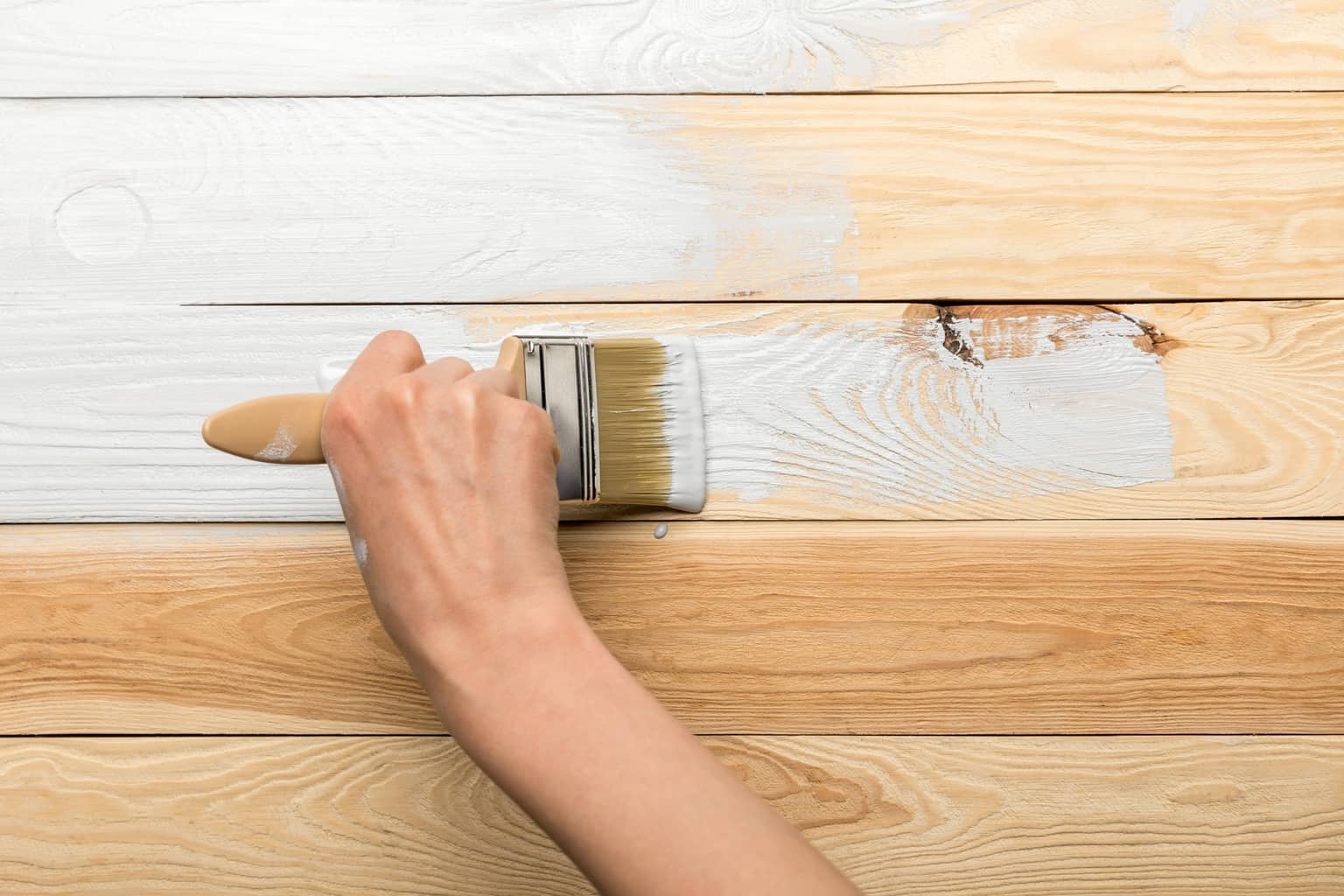Whether you have just moved into a new home or your old house is undergoing renovations, you will probably find yourself with a lot of stained wood. Painting over stained wood is a great way to update your home without breaking the bank. This article will explore how to paint over stained wood in six easy steps.

Why Should You Paint Over Stained Wood?
Painting over stained wood is a cheap way to update the look of your home. It will also freshen up any room with a new layer of color, and it is easier than completely painting the room.

Additionally, painting over stained wood is a good idea because it’s cheaper than replacing the piece of furniture or cover and because painted surfaces are much easier to maintain. Wood can be a tricky material for painting – it needs primer and preferably clear sealant as well – so this method allows you to avoid those extra steps.
Paint Over Stained Wood In 6 Easy Steps
The six steps below will guide you through the process of how to paint over stained wood.
Sand The Wood
The first step in painting over stained wood is to sand the surfaces you want to paint using medium-grit sandpaper. Sanding removes any distressing marks on the surface and creates a smoother surface for the primer or finish coat to adhere to.

Wipe Down The Wooden Surface
The next step is to wipe down the wooden surface with wet paper towels. Doing this will help remove dirt, dust, grime, and other pollutants from the surface you will be painting over stained wood.
Cover Wood With Primer
Now that everything has been wiped off the wood surface, it is time to cover it up with primer.

There are several different types of primer for different kinds of stains and finishes:
- Primer A: Water-based clear primer that seals wood’s pores when applied with a damp sponge or cloth.
- Primer B: A water-based, oil-based primer with a tint of color. It is used to create a uniform finish on wood that is already painted and sealed.
- Primer C: A water-based primer for use in conjunction with “paint over stain” techniques.
Wipe The Wood Again
When the primer completely dried, you should wipe the wooden surface again. Wiping down the wood again will remove any traces of old paint from the surface. It also creates an even surface for the next painting steps over stained wood.
Paint The Wood
Now that the wood is primed and wiped down, you can paint over it. There are some paint types available on the market today:
- Option A: Use oil-based semi-gloss latex paint for a smooth finish or a flat latex to reduce glare. Oil-based paints are better than latex on surfaces where water is used.
- Option B: Use an interior satin polyurethane to coat over stains caused by water damage or an unknown cause. Satin polyurethane will protect against further damage from moisture and help keep the color of the stain intact for years to come.
Apply The Wood Finish
The final step in painting over stained wood is applying a wood finish to the surface. You can use an oil-based varnish that is used to protect and beautify wood by sealing in the stain. Oil-based varnish is flexible, resists yellowing, and is easy to repair.

Another option is to take a water-based varnish with a UV inhibitor, protecting against weather damage. This option lasts longer than an oil varnish and can be used on surfaces subjected to extensive water use.
A natural finish that protects the wood from moisture and does not alter the color or texture of the existing stain. This option can be difficult to apply without any brush marks due to its consistency, but it will weather well over time.
The Bottom Line
Paint over stained wood to update the look of your home without spending a lot of money. I hope this article gives you vast information about how to paint over stained wood easily.
FAQ
What Is The Best Way To Paint Over Stained Wood?
If there are still minor imperfections once complete, use light sanding between coats as needed to gently smooth any bumps or ridges that may have occurred during wood restoration or the priming process.